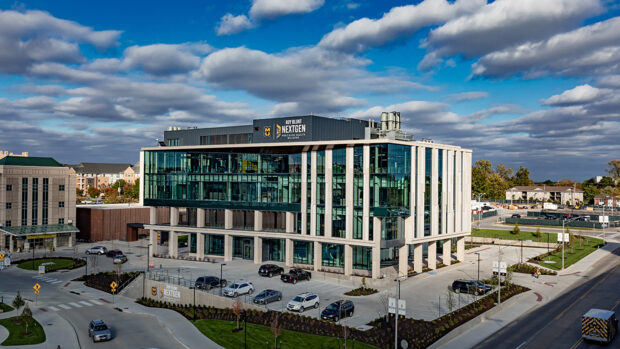HOME | ABOUT US | MEDIA KIT | CONTACT US | INQUIRE
HOME | ABOUT US | MEDIA KIT | CONTACT US | INQUIRE
Excellence abounds, even within the turbulence nationwide.

PUBLISHED AUGUST 2025
A prime example of that in Missouri: The 2024 merger of St. Louis-based BJC HealthCare with Kansas City’s Saint Luke’s Health System. It’s perhaps the most significant change in Show-Me State health-care delivery in the past decade, if for no other reason than it created Missouri’s first system with truly statewide reach, serving a market of 6.25 million residents.
The two nonprofit health systems first announced plans to integrate in May 2023, then officially closed on Jan. 1, 2024. The combined system is among the largest employers in Missouri—44,000 employees in all—and counts among its assets the top three medical centers (and five of the top 10) in the state, as ranked by U.S. News & World Reports.
Operating as BJC HealthCare in the eastern half of the state, and Saint Luke’s Health System in the west, its empire spans 24 hospitals and hundreds of clinics in Missouri, southern Illinois, and eastern Kansas. And the impact doesn’t stop with acute care: The union gave patients expanded access to more than 3,500 clinical trials and increased opportunities for shared research, innovation, and clinical collaboration among physicians and researchers.
Elsewhere, Children’s Mercy Kansas City also has a long history with the magazine’s ranking of pediatric hospitals in the U.S., having earned recognition in 10 separate care categories (with at least three Top 20 finishes) and a high-water ranking of No. 4 nationally in pediatric nephrology.
Combined, Missouri’s 83 acute-care hospitals admitted nearly 660,000 patients and produced 3.4 million patient days in 2024, generating more than $90.2 billion in patient revenue. They also accounted for more than 170,000 employees during the pandemic year of 2020, a figure that is expected to rise as the work-force reductions of that era begin to reverse.
Though straddled by two large health-care markets that draw from multiple states, Missouri has numerous regional and community hospitals, especially in the next-tier markets of Springfield and the Columbia-Jefferson City corridor, as well as sub-markets that include St. Joseph, Joplin, and Cape Girardeau.
The seven largest metropolitan areas are home to nearly 72 percent of the state’s residents, ensuring a significant majority of the population has access to acute care within their MSA, including 11,100 physicians and nearly 82,000 licensed nurses.
Three major faith-based systems also stand out in Missouri health care: Ascension, with more than 150 hospitals nationwide; Ohio-based Mercy, which operates 25 hospitals (12 in Missouri) across a four-state region; and the Sisters of Saint Mary’s SSM Health, with 23 hospitals in Missouri, Illinois, Oklahoma and its headquarters in the state of Wisconsin.
Mercy Hospital in St. Louis, with nearly 860 beds, adds to a highly competitive market for care. SSM, which is aligned with Saint Louis University, brings 332 more beds to the market.
In other parts of the state, CoxHealth has its biggest facility in Springfield, at 867 beds, and an important additional campus with 157 beds in Branson.
The Kansas City metropolitan region offers an even wider diversity of provider options, thanks to the population dynamics that differentiate it from St. Louis. The latter market has far more residents on the Missouri side of the Mississippi than their Illinois neighbors. Kansas City, by contrast, is divided almost equally by a state line, whether measured by population, wealth, or health-care assets.
Anchoring health-care in central Missouri is the University of Missouri Health in Columbia, the teaching hospital affiliated with Mizzou. With 643 beds, it’s the state’s sixth-largest and includes the Ellis Fischel Cancer Center. To the northwest, the 352 beds at Mosaic Life Center’s main hospital in St. Joseph anchor an extensive reach across multiple counties to the north and into Nebraska and Iowa.
Even in the rural areas of a state that spans 62,000 square miles, access to emergency medical services is often just minutes away. Air-ambulance heliports at more than 110 medical centers and community hospital locations serve more than 670,000 people who live in nearly 80 counties outside of the MSA designation.